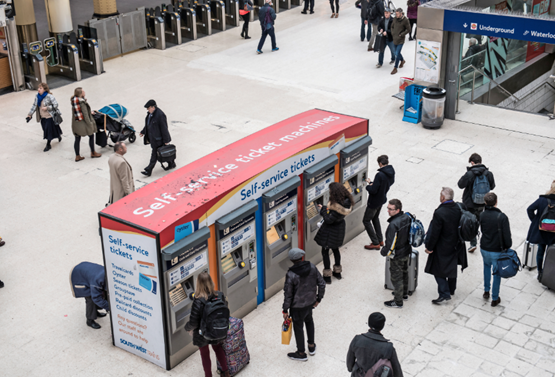 Read the peer reviews for this feature
Read the peer reviews for this feature
The paper tickets used by almost all passengers would still be recognisable to the Victorians who built the railway. But the introduction of smartcards on the railway hasn’t gone exactly to plan - when it comes to ticketing innovation, the bus industry is years ahead.
The South East Flexible Ticketing programme (SEFT) ran millions of pounds over budget. It was delayed several times and has so far failed to deliver. The National Audit Office, the spending watchdog, found that it had been paused three times since 2012 and reset twice, reducing the scope each time. The cost: £54 million, plus a further £66m to upgrade London gatelines. Total: £120m.
The NAO said the business case relied on 95% of season ticket holders switching. However, by the end of March 2017, only 8% had done so. Eleven train operators running services into London were expected to offer flexible smart tickets. Only five offer smartcards, of which only c2c offers a flexible part-time option. Govia Thameslink Railway and South West Trains preferred to develop their own back-office functions, rather than relying on the Government-led system.
The Department for Transport claimed 400,000 commuters now have “access to paperless season tickets”. But the Rail Delivery Group (RDG) confirmed that only 30,000 passengers actually use one. Most travel on c2c. In April, the DfT handed the assets and operation of the SEFT scheme to RDG, saying the private sector should in future take the lead in smart ticketing.
Three years ago, Transport for London slipped straight to contactless bank cards, and it has been a runaway success. But according to Dennis Rocks, managing director, technology services at the RDG, the national railway will catch up over the next eight or nine years.
“Take-up is happening - 250 customers a day are switching and the rate will increase,” he says. “The number of train operators using our back-office function is up to seven, and 450 stations have been upgraded. We can process five million transactions a day and we can host all 28 operators. It is a very robust infrastructure.”
While currently only 5% of its capacity is being used, Rocks says this will become the basis of a national structure for England and Wales. Scotland has a separate multi-modal back-office to cover rail, bus and Caledonian Macbrayne ferries.
“The Secretary of State has said he wants all train operators to be able to use smartcards by December next year. Northern has come to us and we are in the process of garnering the support other operators need.”
It is the gateline infrastructure that takes the time and money. Gatelines and post validators are expensive bits of kit. A majority of the 2,500 stations need civil engineering works, wiring, network connections, and commissioning.
“Ticket vending machines also have to be enabled with the ITSO system, so you buy a product and tap your card to upload that product. That allows people to purchase from a station machine rather than online, with the delay entailed in registering and receiving a card through the post.”
Then there’s the advertising and marketing, and the cultural change needed to alter passengers’ buying habits. It is a many-faceted operation.
Transport consultancy SYSTRA has specialised in this field. Smart ticketing director Jeremy Meal explains: “We sit between the suppliers who don’t fully understand the transport industry, and the transport industry, local authorities and operators who don’t fully understand all the technical intricacies.
“I think rail started out three years behind the buses. It has slipped further since then. There was not a generic solution for the rail industry; it turned into a project-by-project approach on individual train operators.”
“It’s down to the level of investment,” says Dave Roat, strategy manager for California-based Cubic Transportation Systems, a world leader in ticketing and which designed the London operation.
“To implement a smartcard system is expensive. There was a fund available some years ago for bus operators to implement smartcard solutions to support concessionary travel: free for people over 60, reduced rates for people in education, and so on. Councils saw potential for savings and efficiencies. There was an obvious investment case. That never translated into rail.”
Meal comments that it was hard to change an existing franchise and to get commitments that involved significant cost.
“It certainly added to the delays,” he says. “The first attempt which started on South West Trains never properly defined the scheme and ended up just delivering equipment. It was meant to work with TfL’s system, but with delays to that, followed by the London Olympics, it never quite worked as far as a viable smart ticketing rollout. The next five train operators were given a different regime: to reach a certain percentage volume of smartcards on particular flows. They all found reasons why they couldn’t achieve that.”
The result is that most rail passengers do not have the option of a smartcard, even though it has long been commonplace on buses. RDG says 1.5 million e-tickets are sold, either to be printed at home or read on a mobile device. And nationwide there are half a million ITSO rail smartcards. Compared with 920 million orange paper tickets, it remains a drop in the ocean.
Smartcard rollout
SYSTRA’s smart ticketing director Jeremy Meal says that however you look at smart tickets, there are only four types.
“First, there are the concessions: free or proportional fares. Smartcards work well for these. There are period passes, which are for commuters. These now activate on first use. Carnets are for frequent but not daily travellers. They have not been popular yet, though we put them on the Cambridge busway. And the payment purse: loading a card with money, which can accommodate a daily cap on how much is paid regardless of how much it is used.”
In the bus industry, the operator gets a toolkit which allows it to switch on any ITSO smartcard. A change to the card can be handled in two or three weeks. The number of pieces of equipment you have to change is fairly small.
On rail, there is more kit to install. On Northern, for example, they will need to get every conductor’s hand-held machine upgraded before a smartcard can go live, because every conductor must be able to check every ticket. That is an expensive deployment of hardware, says Meal.
“The initial approach in the South East was to introduce a complete new set of products at the same time, including part-time season tickets. The Department was also pre-occupied with the idea of using smartcards to influence shoulder peak pricing. This took any real focus off delivering volume,” he says.
“The Secretary of State has now refocused on the rollout of smart period passes - season tickets. I think with RDG now in control, this is now happening. It could move forward quite quickly. We need to roll out ITSO across the rail network so that any product for any flow could be switched on. That is the bread-and-butter requirement to replace magnetic stripe paper tickets. Mobile phones and barcodes can be added on to that later as an overlay, especially for short-use singles and returns.”
The problem in the South East is that, historically, Transport for London has not bought into that idea. Instead of embracing the ITSO system wholeheartedly at the outset, it had to jump straight from nationally non-interoperable Oyster to contactless bank cards. A bit like a music fan skipping from vinyl LPs to Spotify without going via CDs. The passenger flows in London are sufficiently large to justify it, and fares do not reach the £30 limit on contactless debit cards. With hundreds of millions of journeys routinely paid this way, it has been outstandingly successful. It is seen as a world leader for other capital cities to emulate.
Barriers to smartcard use
Andrew Steele, director of corporate strategy at SilverRail, believes the railway should be trusting its customers and having a relationship with them, rather than criminalising them for “not having a bit of orange paper they bought six hours ago, which they can’t now find”.
Says Steele: “Most people on the railways are honest, but they sometimes make mistakes when trying to use a very complicated system. The technology is not the biggest issue. The problem is persuading the railway to allow change to happen. We have to deliver a better passenger experience. Travelling by train can be very stressful. Passengers are making lots of complex decisions about buying the right bit of paper, at the correct price, for the right peak or off-peak train, with a return service that you have to choose before you travel.
“At the moment, this is not really being tackled. But over the next 12 to 24 months I think we will see significant moves - a step change. For some segments of travellers, the journey will become easier. There will be a new way of selling season tickets.”
Steele says the fragmented structure of the railway has made change more difficult, but adds that if rail does not make buying easier, it is going to fall victim to significantly faster-moving competitors like Uber.
“Technology is not holding us back,” agrees Dave Roat from Cubic. “It is the commercial side doing that. When you see autonomously-driven Tesla cars on the road you know that, on the railway, technology is the easy bit.
“Getting a bus company to see the value in having a deal with a train operator and a car rental company and a taxi firm - that’s the block. The tech industry has woken up to the latent demand in transportation. That innovation has to reach rail and make passengers’ lives easier. But rail has not figured out how to do that.”
Roat says that while technology leaders such as Cubic or SilverRail have the means to do it, the Rail Delivery Group has to lead the way. “It needs to show that a seamless journey from Brighton to Glasgow can be made without a little piece of orange paper that is easily lost or damaged,” he says.
However, everyone looks to their commercial contracts, and Meal points out that they need the numbers to stack up on interoperable tickets. “There is a lack of vision to make something happen nationally,” he says. “As a result, we’ve ended up with city-based local transport cards that are only as good and comprehensive as the individual ‘managers’ of schemes have been able to negotiate.”
And here is an example. Great Western Railway (GWR) is to launch a smartcard for the Severn Beach Line. It is part of a pilot that could eventually feature combined rail and bus travel in a single ticket across Bristol. Allowing people to add a weekly or monthly season rail ticket to an electronic card to begin with, the project is being run in partnership with Bristol City Council.
It’s a small-scale scheme on a single route which carries a million journeys a year. It will be branded as ‘touch’ operating from an online account and, once activated, from a ticket vending machine. Fares bought online will only be active two hours after purchasing, when the card is touched against a station validator or gateline. While it will carry the same branding as the local bus smartcard, it will not initially work beyond the railway branch line, even though both buses and trains are operated by First Group.
GWR’s Lee Edworthy says: “It is the first step towards wider integration of ticketing for bus and rail across the Bristol area.”
Much more technically advanced is a trial on Chiltern Railways, run by SilverRail, Cubic Transportation Systems and the RSSB. It will assess how Bluetooth connectivity could speed up moving through the gateline.
“The fastest way through is a contactless bank card,” explains SilverRail’s Steele. “The magnetic stripe card is quick, too. The worst experience at the gate is when someone stands with a magnetic stripe ticket, tapping it on the Oyster reader because they think it is a smartcard. That happens quite a lot. Otherwise the worst gateline time is barcode reading on the phone, because you have to put it in the right position. Contactless takes 500 milliseconds. A barcode is around two seconds. Not for the time it takes the machine to recognise it, but for the time it takes the person to get it right.”
SilverRail is trialling a system in which the phone talks to the gate using a Bluetooth protocol as you walk up. The gate will see all the phones nearby and it has to open for only the right ones.
“Do we use it like a smartcard, where you tap a reader? Should it work in your pocket or bag?” asks Steele.
“Of course, you can get the gate to open when you’re ten metres away, but that’s not terribly useful. “We could well decide that the physical action of doing something, like tapping a reader with the phone, is what passengers like best. Or they may prefer the gate to open in response to the phone’s mere presence.”
Has Britain fallen behind?
“Outside London, we are behind other comparable countries, such as some city states,” says Meal at SYSTRA, who has worked on ticketing systems all over the world, including Singapore, which has a sophisticated fares system that holds together premiums on some modes for speed/quality, yet managed integrated fares.
“Instead, we just have an overly-complex fares system that tends to be a barrier to travel. Nevertheless, we have lots more market-related charging, which is why rail travel here has doubled. We have a clunky way of interfacing with our transport system. But we still have a very well-used system, so something is right about it.”
Andrew Steele, from SilverRail, points out that Deutsche Bahn trialled new ways of ticketing years ago. In France, they have a national system, so the structure is much easier, but the TGV lines basically run to Paris. “If you want cross-country routes you can face long and expensive journeys, and non-rail options have exploited that, especially among younger travellers,” he says. “SNCF has experienced a significant loss of the younger generation to coach companies and BlaBlaCar, the car pooling service.”
“I don’t think Britain is behind the curve,” counters Cubic Transportation Systems’ Dave Roat. “The demand for rail is stronger here and there is ambition to replace the tendering ticket. In Germany the environment to do that is simpler. Here the whole franchise thing is making it harder. If you look at Germany or France, the train operator is able to do things with mobile ticketing because they run the whole system.”
Roat says Germany has a solution where you get on a train in Berlin, use a mobile phone app, get to Frankfurt, and Deutsche Bahn will charge your account based on mobile cell site location.
“It can physically see where your journey starts and ends and charge across the destination pair,” he says. “It can do that because it runs the whole network. There is a lot of ambition to bring change here, there is work going on in the individual franchises, and the Rail Delivery Group is attempting to co-ordinate that.”
What happens next?
The increasing variety of ways to pay for rail travel can appear bewildering.
There are smart cards. There are e-tickets which can be printed at home or read as barcodes on mobile devices. There are contactless bank cards. Ultimately tickets will be ‘in the cloud’ - an account-based system in which you will pay after making a journey instead of beforehand.
“The overriding factor will be whether concessionary bus travel remains free after the General Election,” suggests Jeremy Meal at SYSTRA. “Because for ‘free’ concessionary travel there is no sensible successor to ITSO smartcards, being both smart and the photo ID. Another factor will be whether young people, who are now required to stay in education beyond the age of 16, also get more local, or even universal concessions in future. This would also make an ITSO purse system logical, at least locally, which can work again integrated with the photo ID.
“But if older and disabled people who travel for free now end up having to pay, there will be a stronger move towards contactless bank cards. Many people will still need to have a form of ID control to use concessions, and that’s something bank cards don’t currently offer. So as long as we have free concessions, we will continue needing ITSO - remember some are valid on rail already. But then mobile phones acting as smart media, not just displaying barcodes are also a step nearer now, following refinements in NFC (near field technology).”
Dennis Rocks, managing director of technology services at the RDG, says part of the problem is that there is a plethora of products and a plethora of ticket prices.
“We need to simplify that,” he says. “But I cannot see when that convergence is going to take place. Whether tickets in the cloud happen in five years or ten, I don’t know.”
Rocks says the aspiration is to get a system that works for all, as within five years there will be wider use of contactless cards across the network as well as a significant reduction in the use of magnetic stripes.
“Ideally, we want to put ITSO smartcards on a phone,” he says. “We are working on this, with trials on TransPennine. Scotland is testing a phone emulating the smartcard with near-field communication, tapping through a gate with a phone.”
Meal predicts that five years from now people will have understood that it is possible to have a basic platform that works nationally.
“We need to make phone use easier,” he says. “We can do that with Android phones now and it ought to be possible with Windows phones. However, Apple currently seems to treat theirs as a proprietary system so they force users onto Apple Pay. That precludes them being used as tickets as well as interoperable tickets as a payment system.”
He says the barcode system for occasional tickets will become universal, but adds they’re not great at gatelines because they are slow to use.
Rocks questions whether gatelines would even be wanted ten or 15 years down the line. “That’s not the industry view - it’s just me asking the question. We want frictionless travel.”
SilverRail’s Andrew Steele predicts that the turn up and go railway will be about account-based travel - the ability to get on and off trains and receive a bill for whatever journey you’ve made.
“If we can give you a best-price promise that you trust, you just turn up and travel - a seamless and more relaxing journey,” he says. “You just have an account in your phone, or any other portable device. You don’t have to stress about which ticket to buy or what time off-peak starts. And because this is an account personal to you, the railway is able to treat you much better. If you are challenged on the train, your own identity is the ticket, the permit to travel. You don’t need anything other than proof that you are the account holder.”
San Diego-based Cubic Transportation Systems compiles journeys in a back-office function that adds whatever business functions are applicable to you: daily fare capping, weekly capping, a carnet. Then it charges the customer’s bank account according to the travel taken. It’s a pay-as-you-go system. The company has been working with RDG on account-based ticketing, and the Bluetooth trial on Chiltern is one example.
“The issue with barcodes is the fumble factor,” says Cubic’s Dave Roat, an American who has lived in the UK for 26 years, but whose accent suggests he landed yesterday.
“Getting your barcode out and orienting it to the reader takes much longer than the reader itself, which is quite fast. With a Bluetooth phone the challenge is to get the gate to unlock the phone as it approaches, waking it up in the right location.”
Steele says this system will come in the near future, but it is not imminent. “You won’t need a physical token that you present to the guard for inspection as the way to access the travel you are buying. For this to happen the Government has to make an open market, so travel is available to mobility retailers. Transport for London is effectively a closed monopoly, whereas mainline operators can sell their tickets in a variety of ways. A third party like Expedia cannot see Oyster so it cannot sell it.”
However, Rocks warns of the danger of disenfranchising parts of society merely because they choose not to embrace technology that works for the majority. “Not everyone has a bank account and not everyone has a mobile phone,” he says. “For season ticket holders, a smartcard or a card on the phone is the way forward in the medium term. But we still need to overcome ‘card clash’. Most people carry more than one bank card or smart card, and these could be stored in the phone. Only one can be acknowledged at the gateline.”
Does that mean the railway will end up with a piecemeal selection of payment methods, rather than a unified and universal replacement for the paper ticket? FirstGroup’s attempt at a Bristol smartcard may be fine for local travel, but would the passenger switch to a barcode system to get a train to Manchester, where a separate smartcard might work on a tram but not in a taxi or to unlock a hire bicycle? Will many different systems be every bit as confusing as today’s many different types, and therefore prove a barrier to travel instead of an incentive?
“That’s a very insightful question,” concedes Roat. “The ambition has been to get rid of the tendering ticket. There have been various initiatives, mainly closed loop local systems by one provider or group, and mostly where you load some money onto an ITSO card and use it up as you travel.”
Various councils use ITSO cards for concessionary travel, such as student rates. Roat says that smartcard on the railway is a technology adjustment, no more, and adds that in many cases franchises are trying to solve the problem just for their own passengers. That means what Southern does and what First will do in Bristol are not the same, so passengers are unable to make a complete journey across multiple franchises or multiple modes.
“With account-based ticketing, the rules reside not in a ticket vending machine but in a back office. To do that you need the trust of passengers. They must know that when they wave their card at a machine, they will be charged the best price for the journey,” says Roat.
“TfL has done that. Londoners believe that when they use their contactless bank card, they are being charged the best fare the system can give them.
“Trust between a train operator and its passengers will need to be built, but I don’t think it is too hard to do that. On an account-based system, when a train is delayed the system will automatically refund the passenger. That is a really quick proof point to the traveller that the train operator is treating them fairly.”
Roat believes the paper ticket will still be around for years to come. Frequent travellers will switch to new media, he says, but those who travel less often will stick to what they know.
“We talk of ‘mobility’ as a service. You want to get on a bus then a tram or the Tube, followed by a train, all on the same card,” he says. “The payment side is one of the easier challenges to resolve. Doing a deal between the train operator and the bus operator is not really about the technology. The data can be linked. Who does the user have the commercial relationship with? Is it the bus operator, the train company or the local council? That has to be sorted out in a way the passenger trusts.
“It’s a new business model. It could follow the Uber style, where the financial relationship is not with the driver but with a back-office function which then pays the driver. Can that work in rail as well?”
Replacing the paper ticket is a big risk, RDG’s Dennis Rocks concludes. “It will start slowly and pick up as the infrastructure rolls out,” he says. “There are big upsides to this. Reduction in fraud is one - it will be harder to claim a ticket is damaged or lost. We will glean information not available from paper ticket sales. We will know from gateline data when people are travelling on different routes, and that will enable operators to look at loadings and put more resources into place at different times, better predicting flows and managing staffing.”
Roat adds that the information from a central back-office can start to drive other decisions and changes that benefit customers.
“We can incentivise passengers to travel on different trains,” he says. “Can we as a country start to manage travelling habits, spreading the peaks a little so not everyone arrives at 0900 and leaves at 1700? This is about a lot more than selling tickets.”
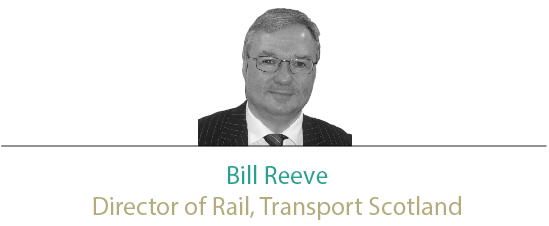
In Scotland, every ScotRail station is now equipped for ITSO smartcards. Season tickets and anytime and off-peak singles and returns are available across the whole network. Carnet-style smart flexi-passes have been launched. And ITSO through Android phone is now in pilot use.
Smart ticketing is a devolved matter for the Scottish Government, delivered through its agency (Transport Scotland) in partnership with our franchise (ScotRail) and other public transport operators.
Smart ticketing on rail, and indeed on all public transport, is overdue. Outside London, passengers expect smart ticketing now, and frankly don’t understand why it is not in place already. And politicians sense that mood, and share the frustration.
But smart ticketing is hard. The article suggests technology is not the problem, but practical experience suggests otherwise. Add to that the challenge of a multi-operator environment without consensus as to customer proposition or commercial model, and it is no wonder that the NAO and others have observed slow progress. In my experience, making smart ticketing work is among the most difficult challenges I have tackled. But it must be made to work, because otherwise passenger frustration will grow, public transport integration will be constrained, and opportunities for new customer relationship management will be missed.
To make smart ticketing work there must be a clear vision and consistent commitment. The Scottish Government has had a published target since 2012: “That all journeys on Scotland’s bus, rail, ferry, subway and tram networks can be accessed using some form of smart ticketing.” The ScotRail franchise procurement was a major opportunity to deliver against that target, and so in a bid evaluation based on 65% price and 35% quality, 25% of those quality marks were available for smart and integrated ticketing. ITSO was specified to link with bus and subway plans, and the franchisee’s commitment was to deliver passenger uptake of smart ticketing - 60% of all ScotRail journeys by the end of year four. This has certainly concentrated minds.
The UK Secretary of State for Transport has now confirmed that TOCs in England and Wales should deliver smart ticketing to allow travel across the whole network. The target is to deliver smart season tickets, singles and returns on ITSO within two years (in essence similar to the Scottish system now). That’s the right approach, but it will be difficult. The article rightly identifies the challenge of installing smart-enabled ticket gates and machines. Other challenges may be less obvious, but I suggest these include:
- The capacity of the ticketing supply base to deliver on this scale and in these timescales in a reliable manner. A step-change in both quantity and quality will be needed.
- A significant staff engagement and training programme. Rail staff must have confidence in their understanding of the smart system, so they can really sell the advantages to passengers.
- Maintaining clarity of commitment - to a plan which delivers what is achievable today, while keeping open a development route to embrace future options. It is necessary to navigate between the Scylla of tantalising technologies and the Charybdis of an ossified system. There is much to be said for many courses, but little will be achieved if one course is not picked and pursued with a steady helm.
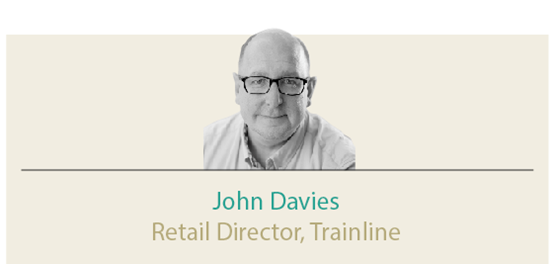
Today’s ticketing landscape sometimes appears more confusing than ever - a mixture of technologies and approaches being developed, and increasingly granular requirements from transport operators (rather than homogenised approaches). The inventory of fares and products available in the industry’s shop window risks becoming more (rather than less) bewildering as a result.
It is easy to be cynical, but there is much to be celebrated in the progress that is being made - although Trainline would like to see it being made much faster. The UK enjoys perhaps the world’s most mature and successful transit retailing system, as developed by Transport for London. It has become a trusted and dependable part of life in the capital. Does London provide a model for the rest of the UK?
Partly. Oyster and contactless Pay As You Go models work because both customer and transit provider engage in a trust model where the precise amount of travel value being consumed is either low in absolute terms, or clearly understood up-front.
But where the value of travel being purchased is greater, the need becomes greater for customers to understand how prices can vary. A passenger can travel from York to Newcastle for a range of prices between £6.50 and £60.50, for example, but everything depends on when they book, on which date and time they travel, by which operator, and in which class. These variables need to be clearly understood before travel.
Technology, especially when focused on consumer need, is hugely powerful. Of all the ticketing alternatives available, mobile appears to hold the answer to many of today’s conundrums. The core of this is the ubiquity of the smartphone - with a higher usage among rail customers than the population at large.
Mobile enables customers to browse, buy and have their travel entitlement delivered to their phone in just a few moments. Trainline has pioneered the growth and development of mobile in UK rail, and customers have responded positively. 45% of what Trainline sells is currently available as a mobile ticket, and we are working with the Rail Delivery Group and our TOC partners to extend this nationally in support of the Transport Secretary’s 2018 digital ticket objective. We are also jointly looking at the next phase of mobile - to enable phone-based contactless travel across the London network (and elsewhere).
80% of Trainline customers offered a mobile ticket take it, and 97% rate their experience as satisfied. Remarkably, our research shows mobile encourages customers to travel more than they did previously - by up to three times. This typically represents incremental, discretionary travel at off-peak times.
And so we see that, like London, if you make it easier for consumers to purchase then they start to buy more often. It results in a virtuous circle of focus on consumer need, developing increased satisfaction, and bringing commercial success for the industry.
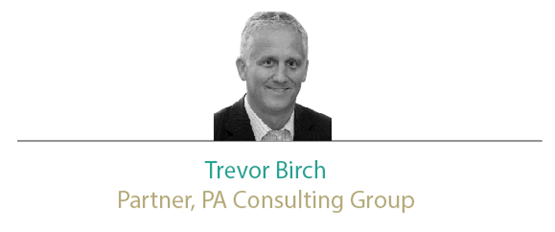
Smart ticketing on rail within the UK is a subject that has been hotly debated for many years, and (in my opinion) too often focuses on technology. The starting point of the article is that take-up has been ‘glacially slow’, and that is something I would agree with - up to now. But I am optimistic about the future and think progress can be much faster if we get a few things right, including:
- Building on the foundations we already have.
- Being clear how you drive take-up.
- Distinguishing between products and technology.
- Being realistic about why we are doing this.
Building on the foundations we already have
Dennis Rocks of the Rail Delivery Group is correct - the back office created by the South East Flexible Ticketing programme (SEFT) and now hosted by RDG was built for the South East but designed to be scaled to a national (England and Wales) infrastructure, and has plenty of capacity to expand further still. Moreover, it provides a fully compliant ITSO infrastructure, creates interoperability between operators, supports a national product set, and is already connected to some major stations in the Midlands and the North.
There has been a massive investment in ITSO over the past decade, and to say that London hasn’t embraced ITSO is missing the point. London has its own priorities with contactless, but is fully equipped to handle ITSO cards. Outside of London there is widespread use of ITSO across the bus industry, and as Jeremy Meal says: “We need to roll out ITSO across the rail network”.
And ITSO is not the only technology we can build on - barcode is operational on a number of operators, and contactless is being explored outside London. We therefore have some brilliant technical foundations to build on, as well as having established commercial frameworks for the allocation of fare income and responsibility. More investment will be needed to maximise the opportunity - getting existing equipment to talk to each other and installing more so that products can be offered seamlessly - but we have the foundation.
Being clear how you drive take-up
Having the technical foundations is a great start, but cannot be the only focus. Value is only realised when people embrace smart tickets, so we must focus on the customer and drive take-up. Here are four things to think about:
- Working with the operators. Ultimately, the TOCs own the relationship with their customers and are best positioned to drive take-up. The NAO investigation into SEFT points to inconsistencies in the way funding agreements were negotiated and requirements set for take-up. More active involvement with the TOCs in the latter stages of that programme has been key to the increase in take-up referenced by Dennis Rocks and set out in the report.
- Convenience and interoperability. Andrew Steele refers to the fragmented nature of the railway and the complex decisions that many customers have to make about their journey. Smart ticketing should make travel simpler rather than more complicated - interoperability is essential to meeting customer needs as well as changing long-established behaviours. The orange mag-stripe ticket creates a consistent customer experience, working seamlessly across operators and flows on rail, and smart cannot be a step back from that. We need the co-ordinated installation of infrastructure and rollout of common products, especially at major interchanges involving several operators. We also need to think more about different travel patterns. Travel in the South East is dominated by rail flows into London, whereas travel in the regions is more fluid. Multi-modal products make smart more attractive, especially in regions and cities where trips on buses are key. Interoperability across different technologies would be nice but may be some way ahead - we need to focus on what the customer wants now, and what makes a difference now.
- Getting the price right. Research by Transport Focus and others shows that price is a major driver of demand for smart ticketing. It was certainly a major influence in the success of Oyster in London. With many ticket types regulated on rail, the DfT will have to take a leading role if price differentials are to be exploited as an incentive to drive take-up. Similarly, the DfT will be affected if any price reduction results in revenue abstraction where TOCs are in subsidy.
- Contactless may not be suitable for all. Not everyone has a bank account. Even among those with a bank account, many (including those on tight budgets) are uncomfortable simply tapping to pay, and prefer the control of buying tickets in advance for the certainty of price.
Distinguishing between products and technology
We need to stop mixing conversations about ticketing products and the technology we use to deploy them. Customers don’t really understand (or want to understand) the difference between ITSO, Contactless, Oyster and ‘Mobile’, they simply want to access the train and make their journey.
Delay Repay is certainly something that customers are interested in, but do they associate it with ‘account-based ticketing’ or appreciate that it requires a way of registering when a journey starts and ends (usually a gate or validator)? I think not.
The frequent interplay of technology and product is lazy and propagates confusion, especially among senior stakeholders based on experience in London, without understanding that different ticketing products can require different amounts of infrastructure regardless of technology. We need to keep it simple, keep moving things forward, and be clear what we are promising. It isn’t difficult to explain the challenges of implementing contactless on national rail or the advantages of barcode for irregular travellers. To build on the foundations we have and move forward more quickly, we need to communicate clearly, give customers what they want and manage expectations. That will drive take-up.
Being realistic about why we are doing this
The article references the recent NAO investigation on SEFT, and the fact that the programme was paused three times and reset twice. Those delays had a massive impact on the progress (and cost) of that programme, and were largely due to questions about strategy and approach. Ultimately, smart ticketing benefits national and regional economies through improved connectivity and greater economic activity. For this reason, central and regional governments must continue to play an active role. Implementation relies upon the transport authorities and operators working together, and we should be clear why it’s important for them and their customers. Only then will we get our priorities right and support to make it happen.
To conclude, there has been significant investment already, and this provides a great foundation to build upon. For possibly the first time there seems to be broad support across the industry, and I am optimistic that progress will accelerate - it is a priority for the Transport Secretary, RDG is pushing things forward, the TOCs are keen, the regions are keen, and the DfT is pushing its Smart Ticketing on National Rail Programme. The future is bright.

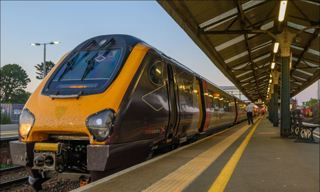
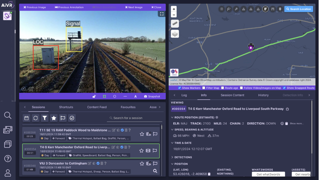
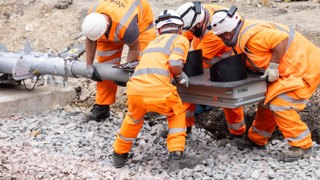
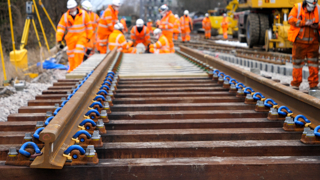


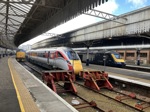
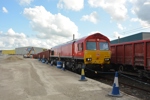






Login to comment
Comments
No comments have been made yet.